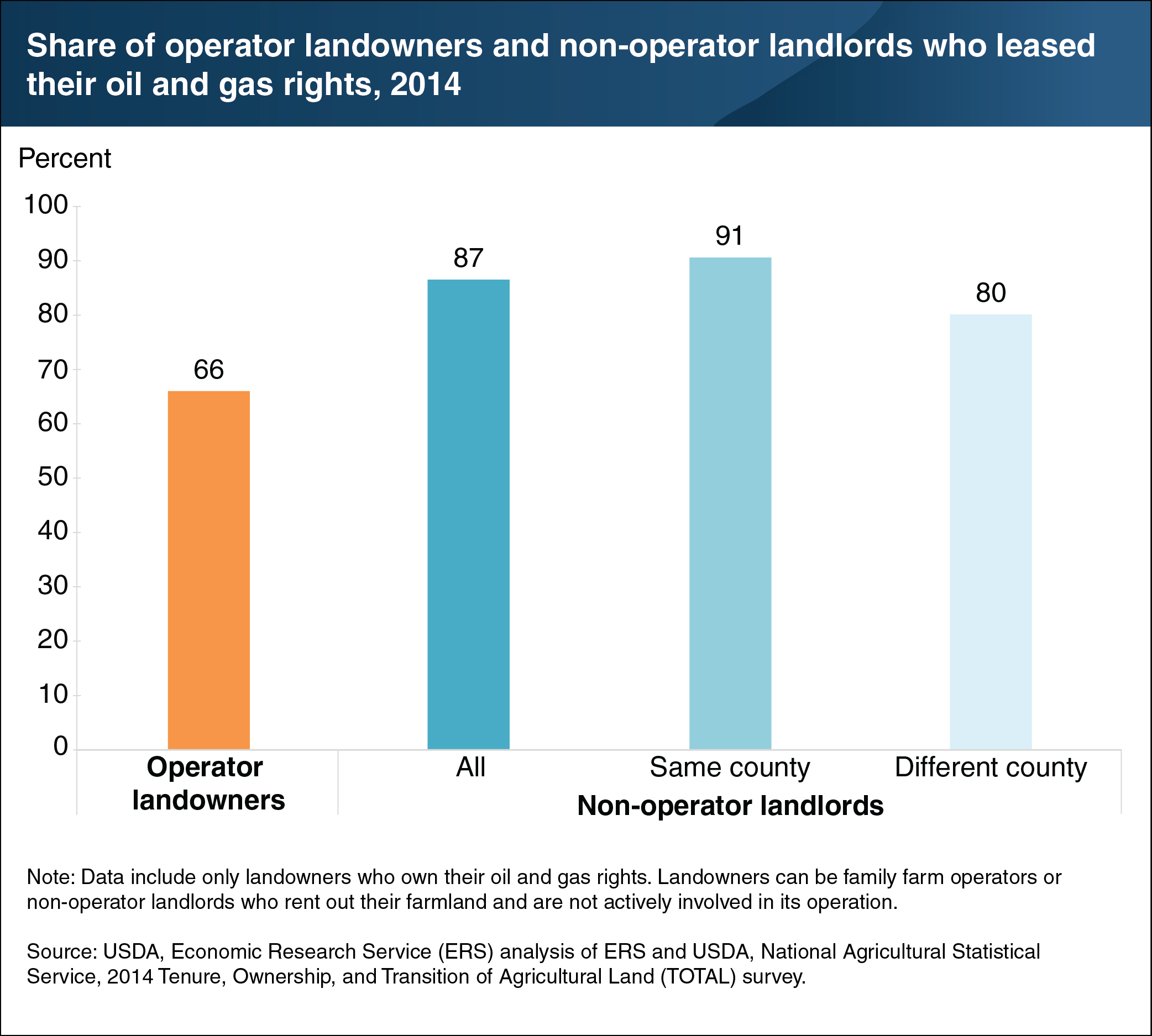Landlords who leased out agricultural land were also more likely to lease out oil and gas rights than operators who owned their land
- by Claudia Hitaj
- 6/25/2019

Nationally, 4.3 percent of farmland operators and 4.9 percent of non-operator landlords in 2014 reported receiving oil and gas payments. In counties that produced oil or gas that year, about 10 percent of operators and 13 percent of non-operator landlords reported receiving this income. Not all operators or non-operator landlords own their oil and gas rights, and of those who do, not all of them choose to lease out these rights to energy companies for oil and gas production. Out of those who reported owning oil and gas rights with positive value, non-operator landlords were 21 percentage points more likely than operator landowners to lease their rights to energy firms. Non-operator landlords who lived in the same county as their tenant were more likely to allow energy development to occur than non-operator landlords who lived in a different county. Operator landowners, who live on the property and farm it, may be less likely than non-operator landlords to lease their oil and gas rights because they would experience the costs associated with drilling and oil and gas production—including air pollution, increased truck traffic, and risk of water and soil contamination. This chart appears in the June 2018 ERS report, Ownership of Oil and Gas Rights: Implications for U.S. Farm Income and Wealth.

